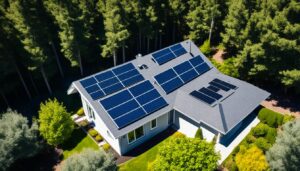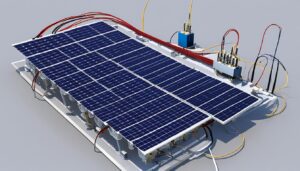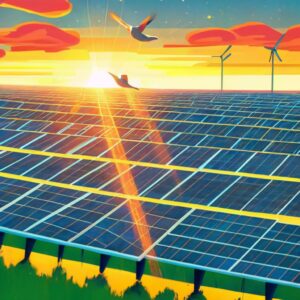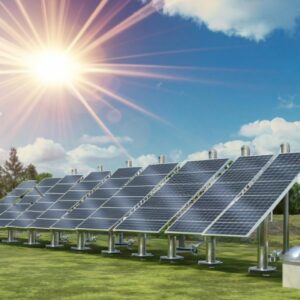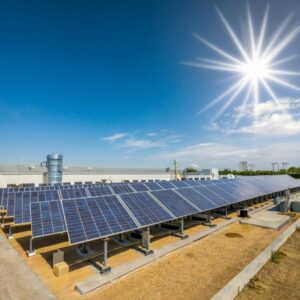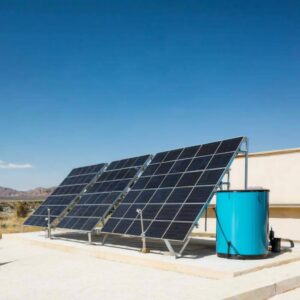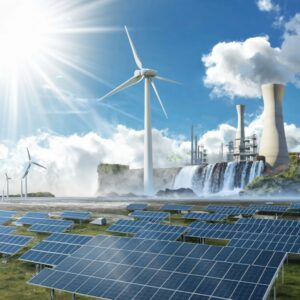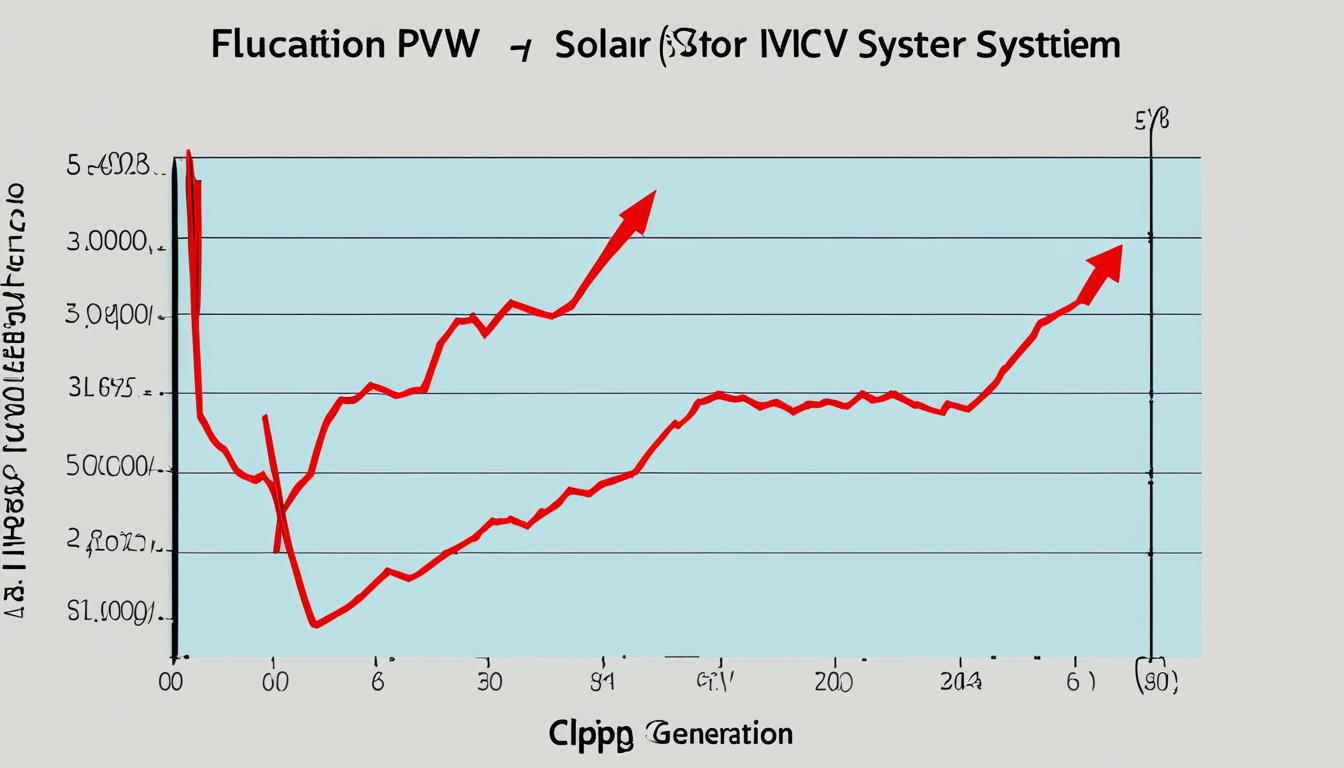
Inverter clipping is a phenomenon in solar PV systems that can impact their efficiency and overall performance. It occurs when the DC power generated by the solar panels surpasses the maximum capacity of the inverter to convert it into AC power. This can lead to a reduction in energy production and affect the return on investment for system owners.
Understanding the implications of inverter clipping is crucial for solar PV system owners and installers alike. By comprehending how it works and implementing strategies to mitigate its effects, system efficiency can be optimized, and the negative impact of inverter clipping can be minimized.
Key Takeaways:
- Inverter clipping refers to the situation when the DC power generated by solar panels exceeds the capacity of the inverter to convert it into usable AC power.
- This phenomenon can result in a decrease in overall system efficiency and energy production.
- Oversizing the inverter, optimizing system design, and utilizing advanced technologies like power optimizers or microinverters can help mitigate the effects of inverter clipping.
- It is crucial to work with qualified solar PV system installers who can assess the specific circumstances and recommend appropriate strategies to minimize inverter clipping.
- Minimizing the impact of inverter clipping can lead to improved system performance, increased energy production, and a higher return on investment for system owners.
How Does Inverter Clipping Impact System Efficiency?
Inverter clipping can have a significant impact on the efficiency of a solar PV system. When the inverter is unable to handle the full DC power output of the solar panels, it cuts off the excess power, resulting in a loss of energy production. This reduction in energy production can vary depending on factors such as the size of the inverter, the capacity of the solar panels, and the environmental conditions. Inverter clipping can lead to a decrease in the system’s overall energy yield and lower the overall financial benefits of the system.
To further illustrate the impact of inverter clipping on system efficiency, let’s consider a scenario. Imagine a solar PV system with a total capacity of 10 kilowatts (kW), composed of solar panels capable of generating up to 12 kW of DC power. If the maximum capacity of the inverter is only 8 kW, any power generated above this limit will be clipped and lost. As a result, the system will only be able to utilize 8 kW of power, leading to a loss of 4 kW of energy production.
To better understand the magnitude of this loss, consider the annual energy output of the solar PV system. If the system has an average annual energy yield of 9,000 kilowatt-hours (kWh), the presence of inverter clipping could result in an energy loss of up to 2,000 kWh per year, depending on the extent of clipping. This is a significant reduction in energy yield, which can directly impact the financial benefits of the system over its lifetime.
“Inverter clipping can significantly impact the overall energy production and financial returns of a solar PV system. It is crucial to address this issue to maximize system efficiency and optimize the benefits of solar power.” – Jane Anderson, Solar Energy Expert
The severity of inverter clipping and its impact on system efficiency can be influenced by various factors. The size of the inverter plays a crucial role, as a smaller inverter will have a lower capacity to handle high DC power inputs and is more prone to clipping. The capacity of the solar panels also matters, as larger panels may generate more power than the inverter can handle. Environmental conditions, such as temperature and shading, can further exacerbate inverter clipping.
The Importance of Monitoring System Performance
To effectively address the impact of inverter clipping on system efficiency, it is essential to monitor the performance of the solar PV system regularly. By analyzing the data collected, system owners and installers can identify instances of inverter clipping and take appropriate measures to mitigate its effects.
Through monitoring, it is possible to identify any mismatch between the capacity of the solar panels and the inverter, helping determine if oversizing the inverter is necessary. Additionally, monitoring can identify shading issues or other factors contributing to inverter clipping, allowing for adjustments to the system design or the use of advanced technologies.
| Factors Affecting Inverter Clipping | Potential Impact on System Efficiency |
|---|---|
| Inverter Size | Smaller inverters may have lower capacity, leading to higher clipping. |
| Solar Panel Capacity | Larger panels may generate more power than the inverter can handle. |
| Environmental Conditions | Temperature and shading can exacerbate inverter clipping. |
By addressing these factors and implementing appropriate strategies, such as oversizing the inverter or optimizing the system design, the negative effects of inverter clipping can be minimized. This, in turn, can improve the system’s overall energy yield, financial benefits, and return on investment.
In the next section, we will explore various techniques and technologies that can be employed to mitigate the effects of inverter clipping and optimize system efficiency.
Mitigating the Effects of Inverter Clipping
To ensure optimal performance and efficiency of your solar PV system, it is crucial to mitigate the effects of inverter clipping. There are several strategies that can be employed to minimize the impact and maximize the overall energy yield.
Oversize the Inverter
One approach to mitigate inverter clipping is to oversize the inverter. By installing an inverter with a higher capacity than the maximum DC power output of the solar panels, you can allow for higher DC power inputs without experiencing significant clipping. This ensures that the inverter can handle the peak power generation, reducing energy losses and improving system performance.
Optimize System Design
Another effective method to mitigate the effects of inverter clipping is through system design optimization. Consider factors such as the orientation and tilt of the solar panels, as well as any potential shading issues. By optimizing the solar panel placement, you can maximize the solar irradiation received, minimizing the instances of clipping. Collaborating with a qualified solar PV system installer can help evaluate your specific circumstances and recommend the best approach to optimize system design.
Utilize Advanced Inverter Technologies
Incorporating advanced inverter technologies, such as power optimizers or microinverters, can also mitigate the effects of inverter clipping. Power optimizers are installed at the individual panel level and maximize the energy harvest by mitigating the impact of shading or panel mismatches. Microinverters, on the other hand, convert the DC power of each panel directly into AC power, reducing the chances of clipping. These technologies enable better energy production and system efficiency, ensuring that the effects of inverter clipping are minimized.
Working hand in hand with a reputable solar PV system installer who has extensive experience and expertise in addressing inverter clipping will provide valuable insights and recommendations tailored to your specific needs.
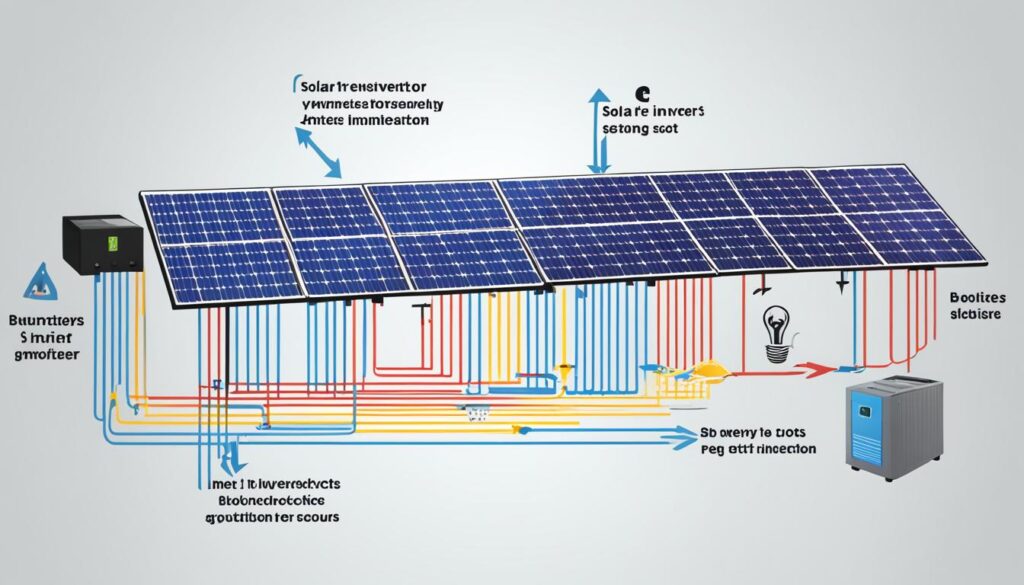
The image above illustrates the importance of mitigating inverter clipping for optimizing solar PV system efficiency.
Conclusion
Inverter clipping is a crucial consideration for solar PV system owners and installers. Understanding its impact on system efficiency and implementing effective mitigation strategies can significantly improve the overall performance and financial benefits of the system.
By oversizing the inverter, system owners can minimize the effects of inverter clipping and ensure that the full potential of the solar panels is realized. Additionally, optimizing the system design by considering factors such as panel orientation and shading can further enhance energy production and system efficiency.
Advanced technologies like power optimizers or microinverters can also play a vital role in mitigating the negative effects of inverter clipping. These technologies provide fine-tuned control and enable individual panel optimization, reducing power losses due to clipping and improving overall system performance.
To achieve the maximum efficiency and return on investment, it is essential to work with experienced professionals throughout the installation and maintenance process. Their expertise will ensure the optimal design and operation of the solar PV system while minimizing the impact of inverter clipping, leading to increased energy production and long-term cost savings.
FAQ
What is inverter clipping?
Inverter clipping is a phenomenon that occurs when the DC power generated by solar panels exceeds the maximum capacity of the inverter to convert it into AC power.
How does inverter clipping affect the efficiency of a solar PV system?
Inverter clipping can result in a loss of energy production and a decrease in the system’s overall energy yield, impacting the system’s efficiency.
What factors can impact the extent of inverter clipping?
Factors such as the size of the inverter, the capacity of the solar panels, and the environmental conditions can affect the extent of inverter clipping.
What strategies can be used to mitigate the effects of inverter clipping?
Some strategies include oversizing the inverter, optimizing the system design, and utilizing advanced technologies like power optimizers or microinverters.
How can oversizing the inverter help mitigate inverter clipping?
Oversizing the inverter allows it to handle higher DC power inputs, reducing the occurrence of inverter clipping and improving overall system performance.
What factors should be considered in optimizing the system design to mitigate inverter clipping?
Factors such as the orientation and tilt of the solar panels, as well as any shading issues, should be considered in optimizing the system design to mitigate inverter clipping.
How can advanced technologies like power optimizers or microinverters minimize the effects of inverter clipping?
Power optimizers or microinverters can help minimize inverter clipping by optimizing the performance of each individual solar panel and improving overall system efficiency.
Why is it important to work with a qualified solar PV system installer?
Working with a qualified installer ensures the evaluation of specific circumstances and recommendations for the best approach to mitigate the effects of inverter clipping for optimal system efficiency.

